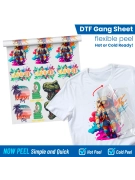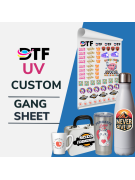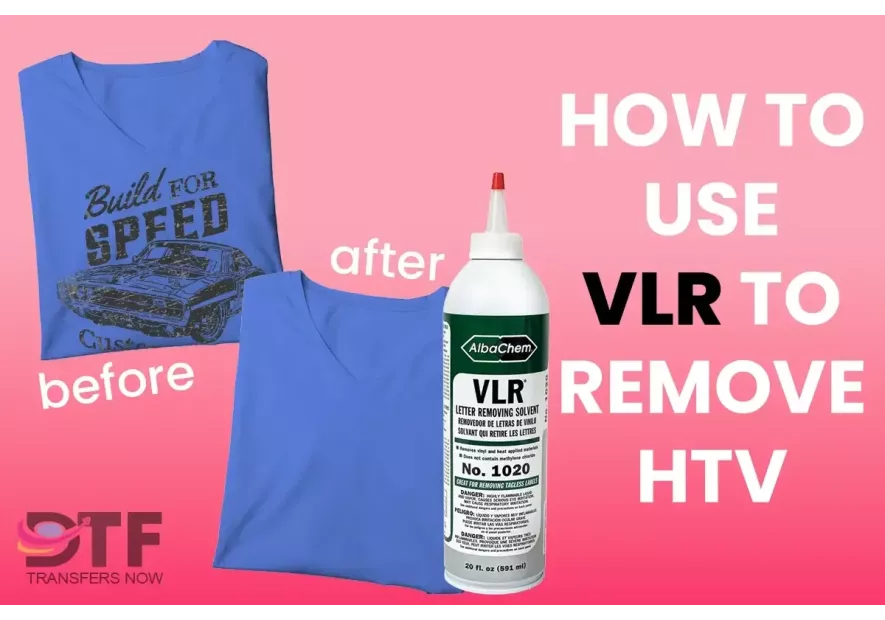Advantages of DTF Gang Sheets

CONTENT
Last week, we discussed the differences between UV DTF and DTF Transfers to assist you in learning about the variety of products you can create and distribute. We invite you to read our previous article if you are still unclear about the difference between the two DTF printing techniques.
If you are more interested in the DTF Transfers technique, this blog concerns you. As you can recall, DTF printing is a method that prints your design using films to be then transferred onto textiles.
Part of the advantages of using DTF transfers involves the ease of combining jobs. That’s why there are DTF gang sheets. Do you know what that is? No? Well, continue reading to learn more about them.
What are DTF Gang Sheets?
First of all, we need to understand what “gang” in printing is. Usually, this term is associated with the group of several images on one sheet. It refers to ganging or grouping all those different logos onto one single document, therefore you have a “gang sheet”.
In the context of DTF transfers, a gang sheet is a large sheet of transfer film that contains multiple designs arranged closely together. These designs are strategically placed on the sheet to maximize the use of the printable area.
DTF Gang sheets allow you to print multiple designs in a single order, optimizing your printing efficiency and reducing material waste. You can form a collage of all the images or logos you may need to print for different projects together, therefore advancing multiple jobs at once. These gang sheets are just another way to say a virtual document such as a PDF, PNG, PSD, or AI containing different artworks sized to their final intended measurement.
Most common applications of DTF Gang sheets
As you may think, this type of film can be used in different applications while using DTF printing, it will all depend on the amount of merchandise you want to produce, and the type of design you want to transfer to the fabric. Hereunder we are going to share with you some common uses of these gang sheets.
- Apparel Printing: DTF Gang sheets are frequently used in the apparel industry for customizing T-shirts, hoodies, and other garments, since they enable the simultaneous printing of multiple designs, making the production process more efficient.
- Textile and Fabric Printing: Beyond apparel, DTF Gang sheets are advantageous when they’re applied to textiles and fabrics for items like banners, flags, and home textiles as these fabrics tend to work well with DTF transfers.
- Small Batch Production: Gang sheets are particularly beneficial for small-scale or custom production runs. They enable printers to efficiently handle orders with a variety of colors and different designs without the need for separate printing runs or separating colors.
- Garment Label Production: DTF Gang sheets make it easier to print multiple labels such as t-shirt tags on a single film, saving time and resources.
- Prototyping and Samples: DTF Gang sheets are useful in the prototyping phase of product development because they allow for the quick and cost-effective production of sample designs before full-scale production.
Advantages of DTG Gang sheets
As you can infer, the use of gang sheets in DTF printing provides several advantages, contributing to efficiency, cost-effectiveness, and flexibility in the printing process. Here are some of them:
1.- Material Optimization
DTF gang sheets contribute to material optimization in the printing process by minimizing unused spaces and effectively utilizing the entire surface area of the film. This approach maximizes the number of designs that can be printed in a single run, reducing the amount of film needed for each design. It also reduces material waste, ensuring that every inch of the film serves a purpose.
2.- Time Efficiency
DTF gang sheets play a key role in enhancing time efficiency within the printing workflow since printers can execute simultaneous printing of diverse images in a single run. The ability to print several multi-colored designs concurrently significantly decreases the overall production time, making it especially advantageous for high-volume orders or scenarios where a variety of designs need to be processed swiftly.
Additionally, the streamlined process enabled by gang sheets reduces the downtime associated with reloading and reconfiguring the printer, allowing for a more continuous and efficient production flow.
3.- Cost-Effectiveness
They help maximize the utilization of materials, minimizing waste and reducing the overall consumption of printing resources. This material optimization, in turn, directly translates into cost savings by lowering the expenses associated with the procurement of printing films.
4.- Versatility
Gang sheets are versatile and adaptable to various applications. They are suitable for printing on different garment substrates, such as textiles, apparel, and more, making DTF printing a flexible solution.
5.- Customization and Personalization
They also are ideal for handling custom orders and personalized designs efficiently. This is especially important in markets where individualization and customization are valued, such as the personalized merchandise industry. They are ideal for custom names and numbers for sports teams as well as customized group apparel for events or birthdays.
6.- Less Operator Intervention
Last but not least, with DTF gang sheets, operators have to intervene less frequently between runs, as multiple designs can be queued up on a single sheet. This leads to a more hands-off approach, freeing up time for other tasks.
Now that you have learned more about what DTF Gang sheets are and their role in DTF printing, don’t forget to share this article on your social media and stay pendant of our blog to learn more about how you can use DTF printing techniques to improve your brand and business.





Leave a comment